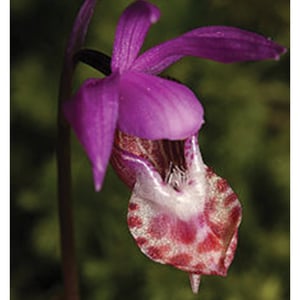
With Mother's Day and Father’s Day behind us, the orchids will likely have time to replenish their stock. These days your average white Phalaenopsis orchids come in custom colors such as "blue mystique", "purple fusion" or "lavender mist". How sad really, nature didn't intend for these orchids to be technicolor. Although the new dye-infusion techniques are born from consumer demand, I just can't get on board with the very unnatural family of blue orchids now in abundance.
Fortunately for purists like me, there are other ways to enjoy the natural beauty and sweet smell of these rare and exotic plants. You might be surprised to learn that Colorado has 25 species of native orchids. These delicate and wild wood fairies are a prize for many photographers and nature lovers as they are often very difficult to find. They are growing in the plains, along the foothills and in the cool, moist ravines of our coniferous forests. Some flourish above tree line and others in wet boggy areas or surrounded by pine needles. Generally Colorado's orchids prefer north-facing slopes and grow at elevations from 5,300 to 12,000 feet.
Interestingly enough, all orchids, over 35,000 species in total, have the same general structure - three sepals, three petals (one of which is the lip or the platform for pollination), and a column (which in orchids is actually the fusion of the stamen and the stigma) attached above the ovary. A quick search of Google will help you brush up on flower anatomy if you are interested. Due to our harsher mountain climate, Colorado's orchids are typically much smaller than their tropical cousins - the largest and one of the most rare, Yellow Lady's Slipper, being about 18 inches tall and the smallest Colorado orchid measuring in at only 3 inches tall.
Locally, there have been reports of the Fairy Slipper orchid growing in and around the West Lake Creek Trail in Edwards along Gore Creek. This orchid actually creates no nectar and thus relies on its beauty to attract bees with the hope they’ll stay long enough to move some pollen along.
Many of Colorado's orchids are indeed rare, with several species on the state and federal threatened and endangered species list. So if you happen across these tiny beauties in the wild, please tread lightly, use your senses and leave no trace. Most importantly, do not try to transplant them as they will not survive in captivity – please enjoy them in their natural habitat and ensure their success for years to come.
According to the “Colorado Nature Almanac: a Month-by-Month Guide to Wildlife and Wild Places” and a few savvy locals…
Where to Go:
- West Lake Creek Trail in Edwards
- Big Creek Lakes Trail northwest of Walden
- Dolores River Canyon and Unaweap Seep south of Grand Junction
- Piedra River north of Chimney Rock
- Poncha Springs (southeast of town below old resort)
- Rocky Mountain National Park
Written by Kristen Blizzard, former Marketing Manager at Walking Mountains Science Center. This article was originally published in 2013. To learn more about wildflowers, join us on a Wildflower Walk at the Vail Nature Center. See the schedule at www.walkingmountains.org/vnc








